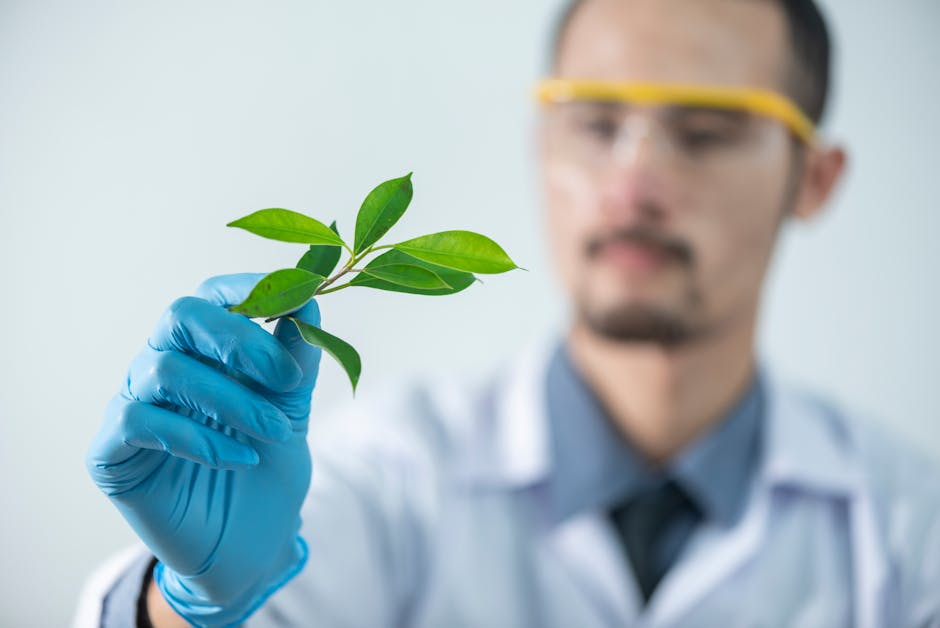The Legal Maze of Synthetic Biology: Unravel IP Rights Today
In our rapidly advancing world, synthetic biology stands at the forefront, promising extraordinary possibilities from innovative medical therapies to sustainable food production. However, alongside the excitement of genetic engineering comes the complex, often bewildering web of intellectual property (IP) rights. For anyone navigating this space—whether you’re an entrepreneur, researcher, or legal professional—the clarity of these laws is crucial. Let’s dive into the nuances of IP rights in synthetic biology, stripping away the legal jargon and empowering you to make informed decisions that resonate with both creativity and compliance.
Understanding the Foundations of Synthetic Biology

Synthetic biology uniquely integrates biology, engineering, and computer science to redesign organisms for beneficial purposes. Think of it as sculpting life; we are no longer passively observing nature but actively reshaping it. This transformation raises significant legal questions and challenges, particularly regarding ownership and commercialization of these innovations. As researchers and companies push the boundaries of what’s possible, navigating the IP maze is paramount to avoid legal entanglements that could stifle progress.
The Role of Intellectual Property in Synthetic Biology

At its core, intellectual property serves as a protective shield for inventors, ensuring that their innovations remain exclusive and financially viable. IP rights can take various forms including patents, copyrights, trademarks, and trade secrets. In synthetic biology, patents are particularly prominent as they offer the strongest form of protection for new inventions, biological processes, and even modified organisms.
However, not all creations in this field are eligible for patent protection. To qualify, an invention must meet specific criteria: it must be novel, non-obvious, and useful. Additionally, the nature of biotechnological inventions introduces complexities due to ethical and moral considerations. For example, can you patent a naturally occurring gene, or does such ownership infringe on the principles of life itself? These queries are part of a broader discussion within the industry, one that necessitates thoughtful contemplation and informed legal guidance.
Different Types of IP Protection for Synthetic Biology

-
Patents: The most common form of IP protection, patents guard inventions for a limited period, typically 20 years from the filing date. In genetic engineering, this could include specific methods for gene modification, novel genetic sequences, or even new microbial strains.
-
Copyrights: Though less commonly highlighted in genetic engineering, copyrights protect original works of authorship, including computer software that may be integral in this field. As synthetic biology increasingly involves extensive data and algorithms, establishing copyright can play a vital role in safeguarding software innovations.
-
Trade Secrets: Some companies may opt to protect their proprietary processes as trade secrets rather than pursuing patents. This route can be valuable as trade secrets can remain protected indefinitely, provided they are kept confidential.
-
Trademarks: While used infrequently in the science context, trademarks can play a role in branding synthetic products, ensuring that consumers can identify the source and quality of innovative offerings.
For an in-depth exploration of how biotech intersects with the law, you might be interested in reading more in our article on bioethics in the courtroom.
Key Legal Considerations in IP Rights for Genetic Engineering

Navigating the intricacies of IP rights within synthetic biology is akin to walking a tightrope. Here are several vital considerations to keep in mind:
1. Prior Art and Novelty

Before filing a patent application, it’s essential to conduct thorough research on existing inventions—commonly referred to as “prior art.” A failure to identify relevant prior art can lead to patent rejections, litigation, or worse—resulting in the inability to capitalize on your invention due to infringement claims.
2. Subject Matter Eligibility

The U.S. Supreme Court and other international bodies have established precedents regarding what constitutes patentable subject matter. This means distinguishing between natural phenomena and human-made inventions is crucial. Innovations that build upon existing biological mechanisms often confront challenges of patent eligibility.
3. International Treaties and Regulations

In an era of globalization, understanding how various jurisdictions treat IP rights in synthetic biology is vital. Instruments like the TRIPS Agreement (Trade-Related Aspects of Intellectual Property Rights) set international standards, but individual countries can impose additional rules.
For a deeper dive into regulations surrounding technology, you may value insights from our piece on navigating the legal terrain of quantum computing.
Ethical Dimensions of IP in Synthetic Biology

The dialogue surrounding IP in synthetic biology cannot overlook its ethical dimensions. As innovations unfold, questions arise about who owns the right to manipulate genetic materials and life forms. The repercussions of erroneous patents or ownership claims can extend beyond legal frameworks into moral dilemmas, challenging the balance between scientific advancement and ethical responsibility.
Consider the implications of patenting a genetically modified organism designed to produce a life-saving drug. Who should profit from such a creation? Should the originators of the technology share benefits with local communities that may have contributed knowledge, or are they solely entitled to the fruits of their labor?
The ethical landscape surrounding these questions not only demands legal insight but a comprehensive understanding of the community and ecosystem involved in the innovation.
The Process of Patenting in Synthetic Biology

Embarking on the patenting journey requires strategic planning and a thorough understanding of the complexities involved. Here’s a simplified roadmap to guide you through:
1. Documentation and Research
Accurate documentation of your invention is critical. Detail every aspect of your genetic engineering process, including methodologies, results, and potential applications.
Next, conduct a landscape analysis to identify existing patents and research. This will inform whether your invention presents a novel addition to the field.
2. Engage Expert Legal Counsel
Navigating the nuances of patent law requires expertise. Collaborating with a legal professional specializing in intellectual property can prevent missteps during the patent application process.
3. Craft the Patent Application
This document should clearly overview your invention, articulating its novel aspects compared to prior art. Ensure precise claims are made to establish the breadth of protection you seek.
4. File with the Appropriate Authorities
Submit your application to the relevant patent office, such as the U.S. Patent and Trademark Office (USPTO) for U.S.-based inventions or international offices if you plan to expand globally.
To learn more about legal rights and responsibilities surrounding innovative processes, consider visiting our article on unlocking the legal framework of biohacking.
Challenges Faced in IP Rights for Synthetic Biology
Despite the stringent frameworks provided, challenges remain prevalent within synthetic biology. Here are some issues to consider:
-
Rapidly Evolving Science: The pace of advancements in biotechnology often outstrips legal developments, leaving gaps and uncertainties in regulatory environments.
-
Infringement Issues: As many companies operate in the same space, navigating potential infringement claims becomes a minefield. Organizations need robust IP strategies and monitoring systems to protect their inventions.
-
Public Perception and Trust: The public’s understanding of genetic engineering impacts regulatory attitudes. Engaging transparently with communities can foster trust and enhance acceptance of innovative technologies.
These challenges necessitate proactive approaches, seeking out collaborations that not only adhere to legal requirements but also advocate ethical practices in innovation.
Future Trends in Intellectual Property for Synthetic Biology
As technology evolves, so must our understanding of IP rights. The future will likely see:
-
Increased Global Harmonization: With advancements occurring globally, there’ll be significant pressure to harmonize patent laws across borders, fostering a cohesive environment for bio-innovations.
-
Adaptive Legal Structures: As synthetic biology expands, legal frameworks will need to adapt to address unique challenges including bioethics, equity, and access to patented technologies.
-
Emerging Technologies and IP: New technologies like CRISPR gene editing will continue to challenge traditional frameworks of ownership, pushing the need for revolutionary legal thinking.
For insights into how technology intersects with legal frameworks, consider browsing our article on understanding the legal implications of expression in gaming.
Final Thoughts
Navigating the legal landscape of synthetic biology requires not only a grounded understanding of intellectual property rights but also an appreciation for the ethical dimensions that accompany innovation. By approaching this field with both vigilance and creativity, professionals in synthetic biology can harness their intellectual assets effectively, driving the industry forward while ensuring compliance and moral integrity.
As we seek to unlock the potential of this cutting-edge science, prioritize collaboration with legal experts, engage with local communities, and remain informed about evolving regulations. With the right tools and understanding, the intricate maze of legalities can become a pathway to groundbreaking advancements in the realm of synthetic biology.



